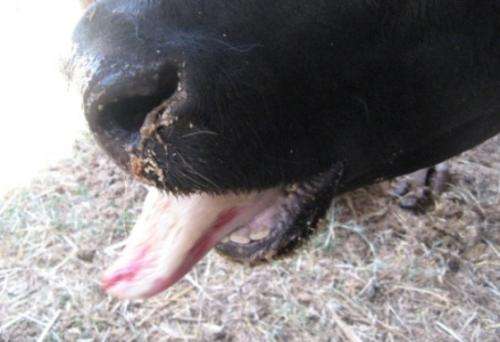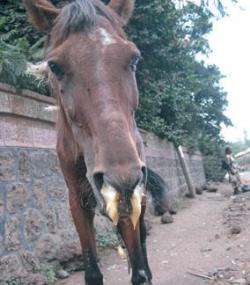Combating key viral diseases in livestock in Ethiopia

Gelagay Ayelet Melesse's doctoral research reveals that there are several serotypes of the virus causing foot-and-mouth disease (FMD) and the African horse sickness virus (AHSV) and several different hosts for these viruses in Ethiopia.
His study also highlights the economic repercussions of these viruses and other viral diseases in domestic livestock. His findings may contribute to improved strategies for controlling and combating the spread of such diseases and to increased self-sufficiency in food.
Livestock play an important role in Ethiopia as a livelihood both for nomads and for farmers cultivating the land. Indeed, products from livestock are the country's second largest export after coffee.
However, due to a number of diseases affecting domestic animals, this resource is not reaching its full potential. Typical diseases in this respect are foot-and-mouth disease (FMD), African horse sickness (AHS), lumpy skin disease (LSD) and camel pox. Up until now, we have only had limited knowledge about the real economic consequences of these diseases, their distribution, types of virus and also the ecological and operational factors that may have a bearing on the prevalence of the diseases.
Melesse's doctoral project identified five different serotypes of the FMD virus taken from several different host animals in Ethiopia. Prevalence of the FMD virus is related to the way the animals are kept and to the extent livestock is in contact with wild animals. Research on lumpy skin disease and African horse sickness shows that outbreaks of these diseases occur at the end of the rainy season (in November and December). Melesse isolated several types of AHS virus and also studied the occurrence of camel pox, which has serious repercussions in the main camel-breeding areas of Ethiopia.

Melesse's doctoral research has provided us with valuable information about virus types, disease distribution in relation to season and geographical region and the economic significance and risk factors for FMD, LSD, AHS and camel pox in Ethiopia. Using his findings, vaccine-based control strategies can be implemented which may lead to the country becoming more self-sufficient in food.
Gelagay Ayelet Melesse defended his doctoral research on 7th November 2013 at the Norwegian School of Veterinary Science with a thesis entitled: "Epidemiological investigation and molecular characterization of major viral diseases of livestock: implication for disease control in Ethiopia."
Provided by Norwegian School of Veterinary Science



















